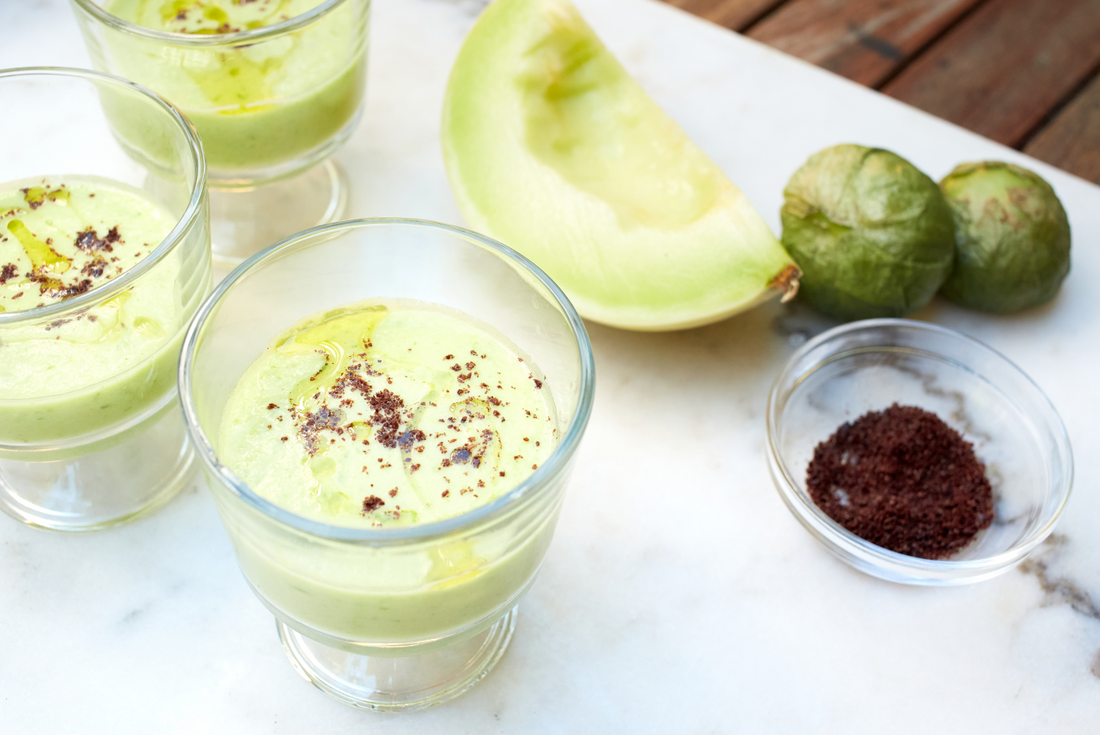
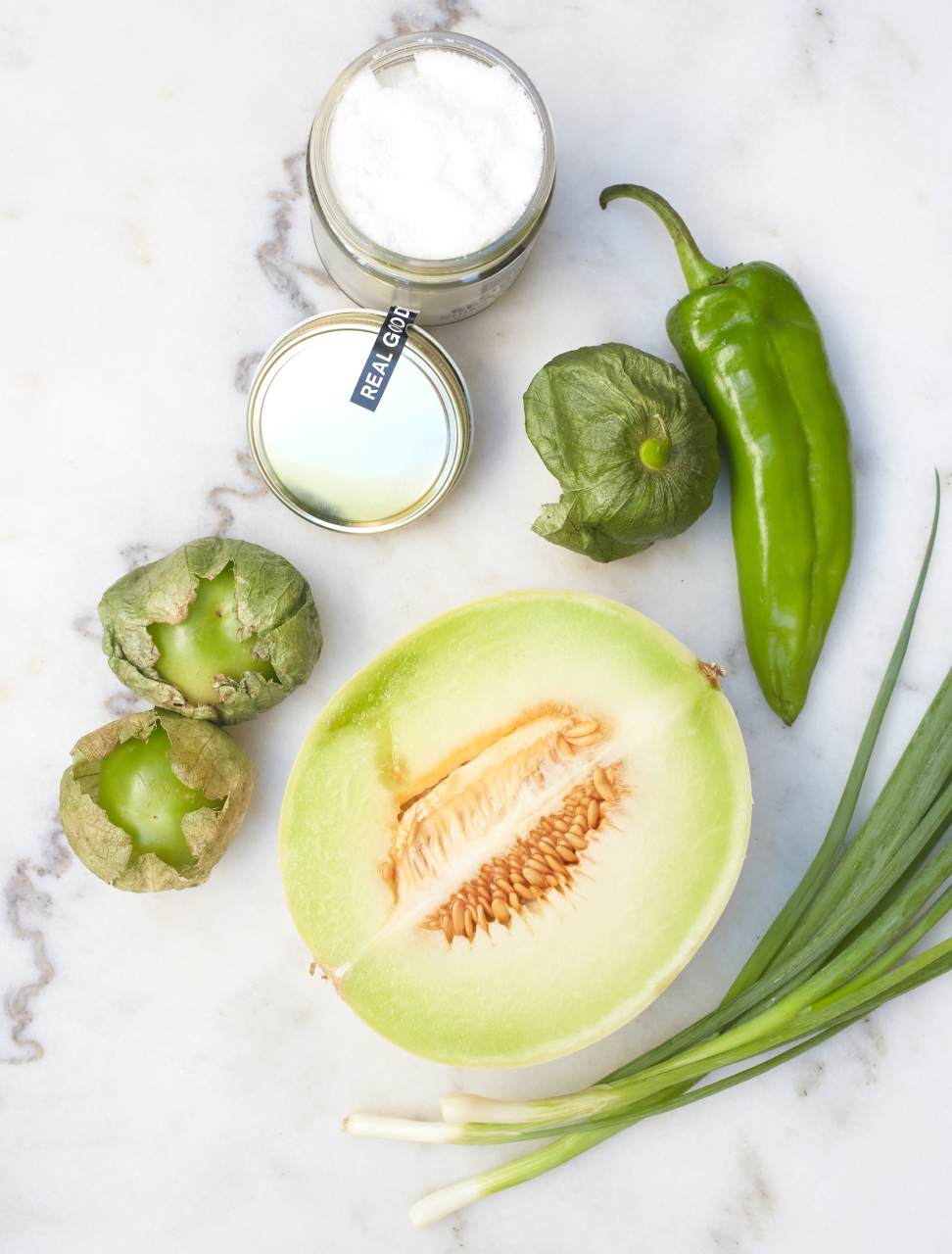
Maybe the Arabs brought gazpacho to Spain, although some think it might be older, from the Romans. There are countless versions across the Iberian Peninsula, and most include bread. The ancient soup is thought to have originally been just stale bread soaked in vinegar.
But with powerful blenders and refrigeration, gazpacho evolved to a smooth, vegetable, and olive oil emulsion flavored with vinegar. In the hot Andalusian summers, a lighter gazpacho leaves out the bread and is served ice cold to act as a tonic against the heat.
The classic style served in Seville, thin and thirst-quenching, contains just tomatoes, cucumber, onion, peppers, garlic, olive oil, vinegar, and salt. Stone fruit can add the same sweetly acidic note as tomatoes, like in this version with peaches.
Melons aren’t as common, but they make good gazpacho, and the blended cold soup is the best use for the less-than-perfect melons all too common in the grocery store. The tomatillos are completely inauthentic, but they provide both a tangy flavor and a nod to the Americas ravaged by the conquistadors.
What You'll Need
Ingredients
For the shopping list
- 1/2 honeydew melon, peeled and seeded
- 3 green onions
- 1 anaheim chile, stem and seeds removed
- 3 tomatillos, papery husk removed
- To serve cured sumac (optional)
Equipment
From the kitchen
- 1 Blender
- 1 Chef's Knife
- 1 Cutting Board
What you'll have to do
Step 1
Cut the melon and other vegetables into chunks that easily fit into your blender. Put the melon into it first since it will liquify and pull the other vegetables in.
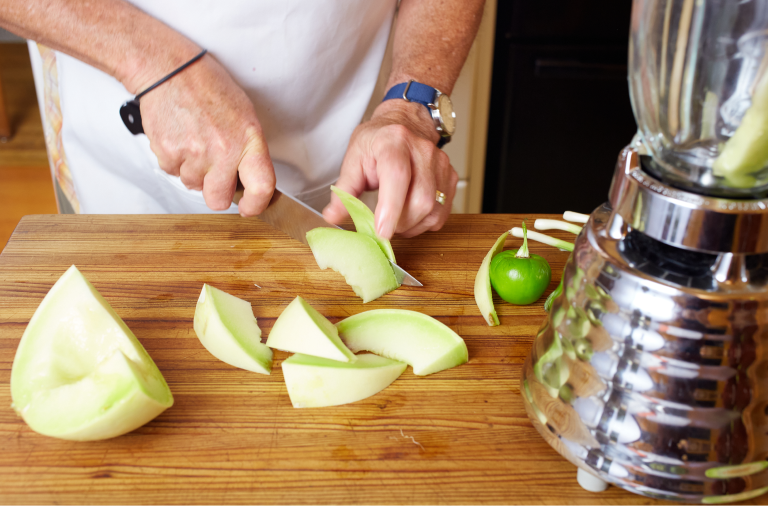
Step 2
Blend until completely smooth, then add the salt, vinegar, and olive oil. Blend again until emulsified.
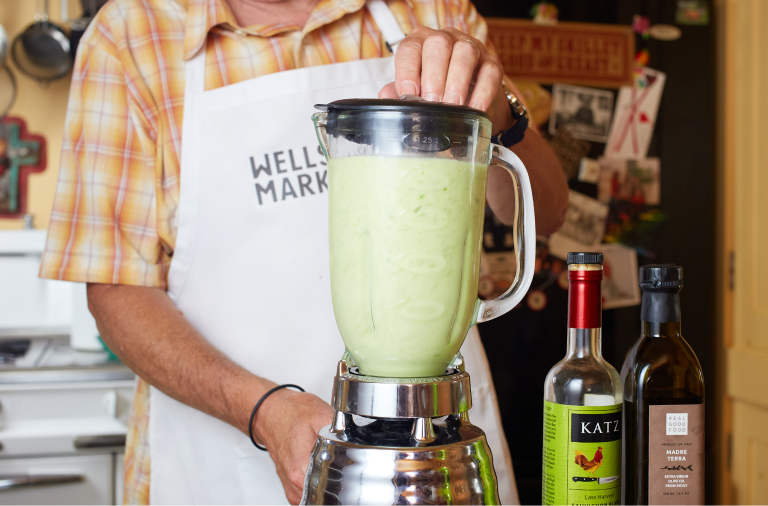
Step 3
Chill for a few hours or serve with ice. When ready to drink, drizzle with olive oil and finish with cured sumac.
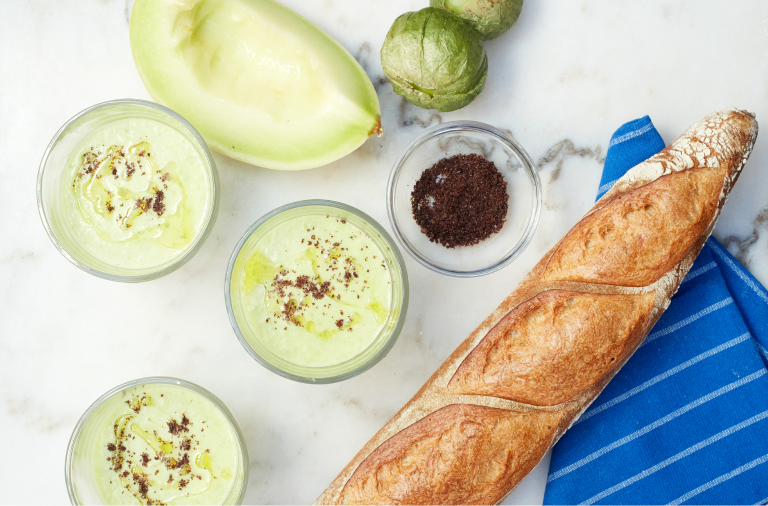
Shop this recipe
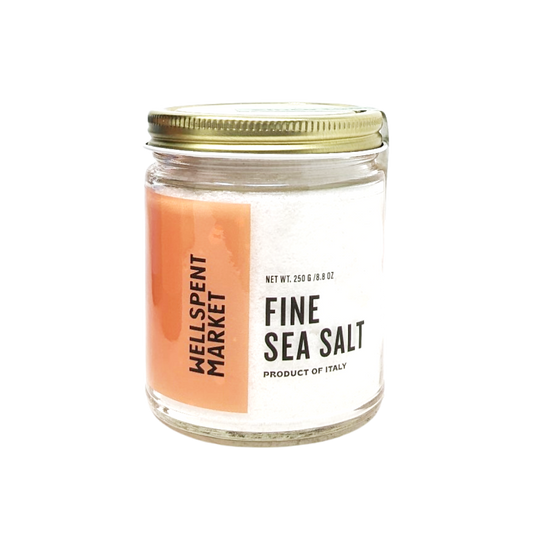
Salt, Herbs, & Spices
Italian Fine Sea Salt
Trapani - Sicily

Vinegar
Moscatel Vinegar
Andalucia - Spain

Olive Oil
Bettini Organic
Umbria - Italy
More recipes
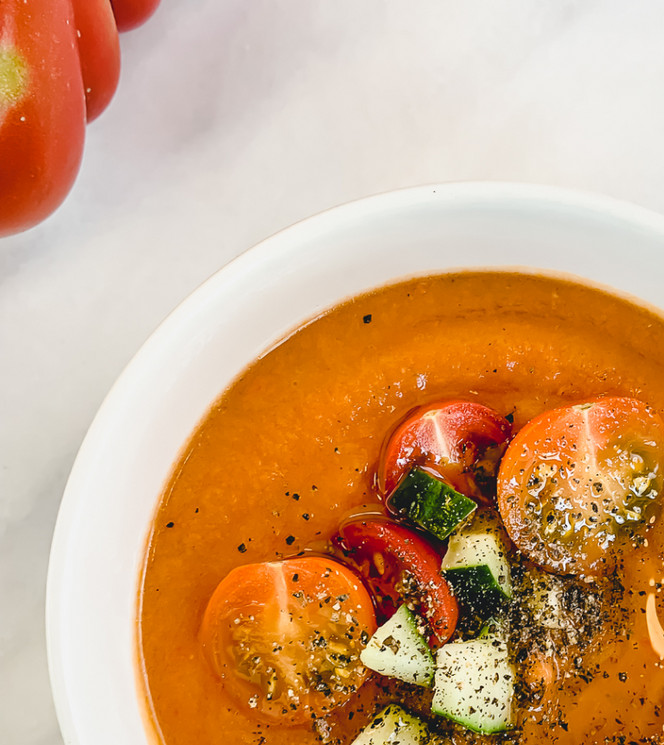
Gazpacho Sevillano with Peaches
Acidic and sweet like tomatoes, peaches make this shockingly refreshing.
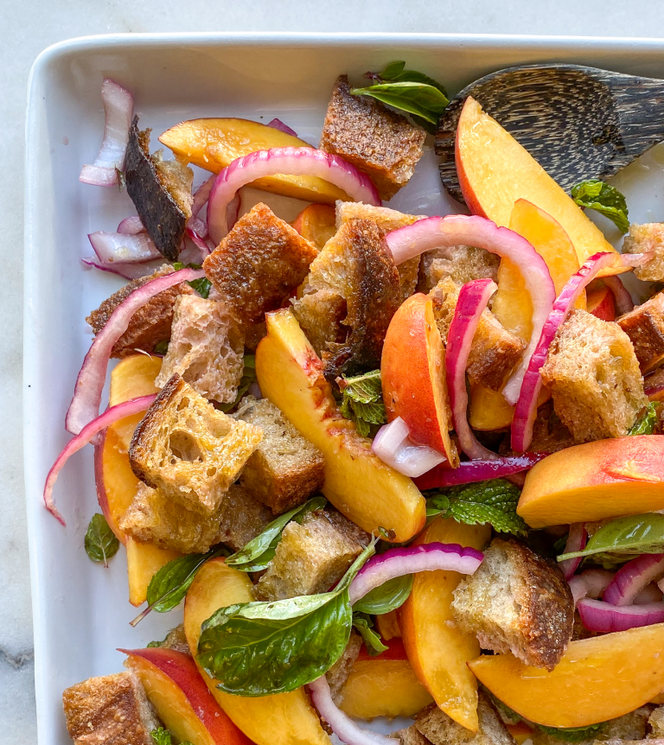
Peach Panzanella
Swap the tomatoes for peaches in this version of the Italian bread salad.


